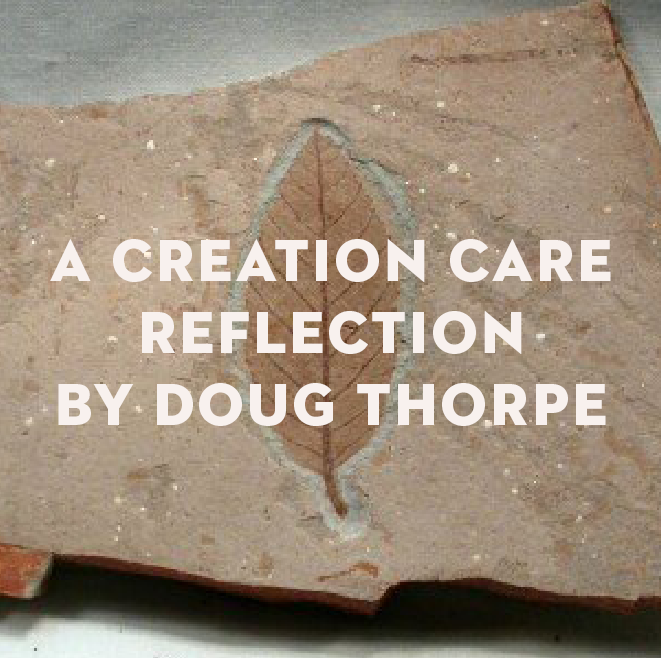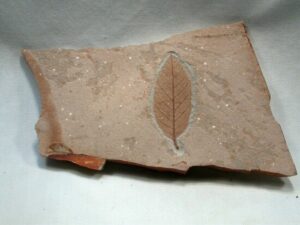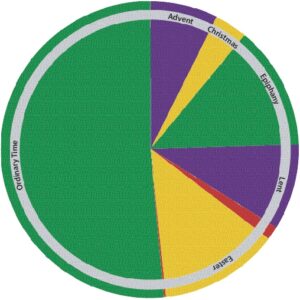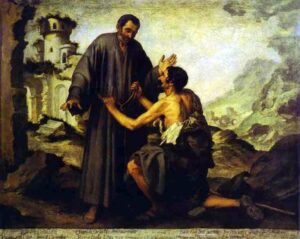
February 23, 2022
A birch leaf held fast
In limestone ten million years
Still quietly burns,
Though claimed by the darkness.
Let earth be this windfall
Swept to a handful of seeds—
One tree, one leaf,
Gives us plenty of light.
—John Haines, The Owl in the Mask of the Dreamer: Collected Poems
 Lent. The word derives from the Old English lencten meaning spring season, perhaps derived from a related root meaning long, connected to the lengthening of days. Or, perhaps, to just how long it can take for spring to arrive in the north. Think of the melting of icicles off gutters, which I remember best from my childhood on the edge of Chicago when I used to delight in eating them like popsicles. Lent is no longer winter exactly, but in northern climates it’s also not that burst of energy that we associate with Spring, even though the spring equinox often occurs during Lent. Still, it’s during this liturgical season that somewhere below the surface of the earth things are beginning to quicken. Life returning—time itself is in motion again.
Lent. The word derives from the Old English lencten meaning spring season, perhaps derived from a related root meaning long, connected to the lengthening of days. Or, perhaps, to just how long it can take for spring to arrive in the north. Think of the melting of icicles off gutters, which I remember best from my childhood on the edge of Chicago when I used to delight in eating them like popsicles. Lent is no longer winter exactly, but in northern climates it’s also not that burst of energy that we associate with Spring, even though the spring equinox often occurs during Lent. Still, it’s during this liturgical season that somewhere below the surface of the earth things are beginning to quicken. Life returning—time itself is in motion again.
The church calendar follows this seasonal calendar, at least here in the northern hemisphere. We move from the celebration of Mary’s pregnancy on March 25, close to the spring equinox, to the birth nine months later on December 25—winter solstice, as light begins to overtake the darkness. Then we move quickly from birth and baptism to the 40 days of desert wilderness, also echoing the Israelites’ 40 years of wandering: Lent, with that underground sense of something still unknown coming—a wind, a belief in buried seeds. And just as Joshua crosses over the Jordan River into the Promised Land, so does Jesus—whose name echoes Joshua’s—arrive at last back in Jerusalem, David’s city, the spiritual center of the Promised Land.
And then suddenly it all seems to end. And then it doesn’t.
We’re in motion and yet also circling, since we do it every year, all praise to The Book of Common Prayer. Each of us is a year older, so that we’re moving forward through time even while the liturgy circles, so that simultaneously we feel ourselves caught within a linear process, time moving inexorably ahead, even while we stand outside of time. We are, in Christ, in time and freed from time.
 There is no better expression of this, in my opinion, than the experience of celebrating Eucharist even as we are observing Lent—and yes, right up through Good Friday. So there we are, caught in this linear sequence that leads us inevitably to the cross and death, and yet in the very midst of that we are celebrating again this meal with Jesus, who is very much with us—not simply as a memory, but somehow here, now, even as He is with Mary Magdalene at the tomb and with those disciples on the road to Emmaus.
There is no better expression of this, in my opinion, than the experience of celebrating Eucharist even as we are observing Lent—and yes, right up through Good Friday. So there we are, caught in this linear sequence that leads us inevitably to the cross and death, and yet in the very midst of that we are celebrating again this meal with Jesus, who is very much with us—not simply as a memory, but somehow here, now, even as He is with Mary Magdalene at the tomb and with those disciples on the road to Emmaus.
Very paradoxical. My non-logical literary mind loves it.
So too with the idea of the Kingdom: we affirm it as a future apocalyptic reality (and we finish the New Testament in linear fashion with a vision of the descent of the “New Jerusalem” among us), even as we accept Christ’s proclamation of a Kingdom already here, around us, among us, within us.
Clearly this is a Kingdom rather unlike Rome’s, or indeed unlike David’s.
Seasons come, seasons pass. We have a journey before us only to discover that there is nowhere we need to go.
 Consider the story that Belden Lane (the cathedral’s guest this coming April) retells from Niko Kazantzakis. A pious monk saves up all his life to make the great pilgrimage to Jerusalem, where he will approach the Holy Sepulcher at last, circle it in ritual fashion three times, and only then be ready to return home and be ready to die, a transformed man. At last he has the money for the trip and he sets off, leaving his monastery for the first time in decades. But no sooner has he left than he comes upon a poor beggar who asks the monk where he’s off to. “Jerusalem,” proudly says the monk.
Consider the story that Belden Lane (the cathedral’s guest this coming April) retells from Niko Kazantzakis. A pious monk saves up all his life to make the great pilgrimage to Jerusalem, where he will approach the Holy Sepulcher at last, circle it in ritual fashion three times, and only then be ready to return home and be ready to die, a transformed man. At last he has the money for the trip and he sets off, leaving his monastery for the first time in decades. But no sooner has he left than he comes upon a poor beggar who asks the monk where he’s off to. “Jerusalem,” proudly says the monk.
“And you have saved enough for this trip?” asks the beggar.
“Yes indeed—I have it right here in my satchel.”
The beggar then describes his plight: a wife and young child at home, no work, no food; indeed, they are on the very edge of starvation. After a moment’s silence the beggar looks at the monk: would you consider, he says, giving me your money and then walking around me three times before returning to your monastery?
The monk returns the gaze of the beggar and then slowly opens his satchel, hands over his life’s savings, circles three times around the man—and yes, returns to the monastery ready to die, a transformed man.
Lent. Yes, we have a long journey ahead of us. And yet—where is there to get to? Jerusalem? The Holy Sepulcher? Sometimes yes, absolutely, we need to go on pilgrimage. But, the story reminds us, ultimately there is nowhere else we need to go to follow this Way, recognizing that Christ himself is right here, directly in front of us in a world in need of all we’ve been saving up. And so we circle that holiness—in the liturgy and in the love we give away to family, friends, strangers, the broken earth itself. We return home and live out our days transformed, moving with the seasons even as we live, as Blake put it, in eternity’s sunrise.
Longtime Saint Mark's parishioner and former vestry member Doug Thorpe is Professor Emeritus of English at Seattle Pacific University.
Leave a Reply